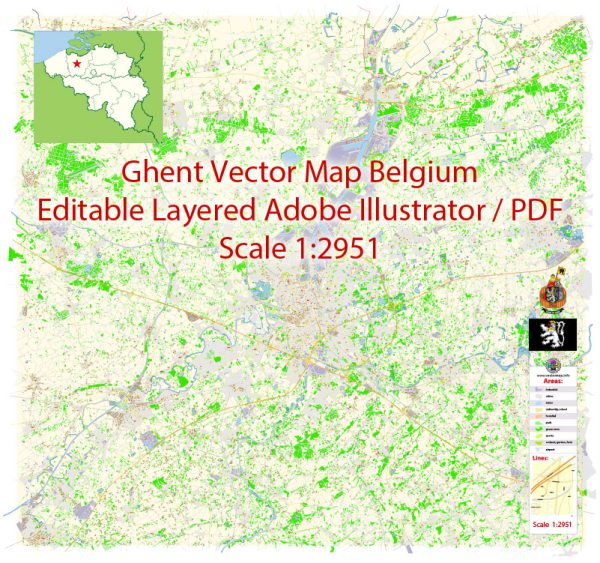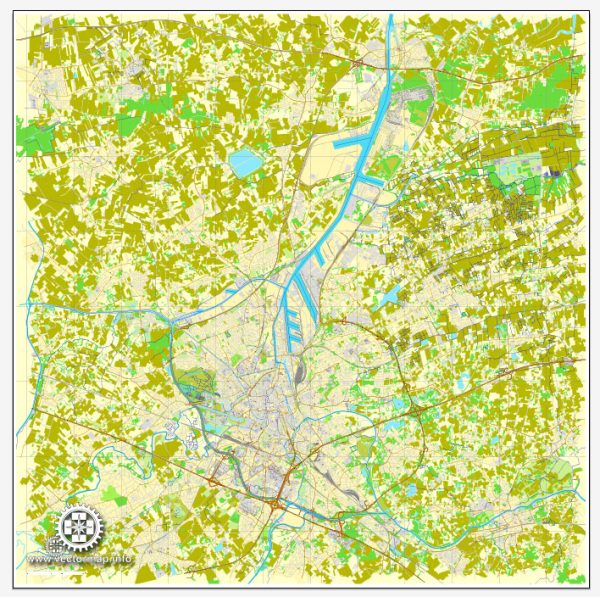Ghent, a charming city in Belgium, is known for its rich and diverse architectural heritage. The city’s architecture reflects its history, with elements from different time periods and architectural styles coming together to create a unique and picturesque urban landscape. Here’s a description of the architecture in Ghent:
- Medieval Marvels: Ghent boasts a well-preserved medieval city center with stunning examples of Gothic architecture. The Saint Bavo’s Cathedral, also known as Sint-Baafs Cathedral, is a prime example of this style. Its imposing facade features intricate stonework and large stained glass windows, while the interior showcases impressive vaulted ceilings and ornate wooden altars. The Belfry of Ghent, a UNESCO World Heritage Site, is another iconic medieval structure, displaying the city’s medieval wealth and influence.
- Gravensteen Castle: This medieval castle, also known as the Castle of the Counts, is a striking fortress in the heart of Ghent. It features a combination of Romanesque and Gothic architectural elements, complete with crenellated walls and a moat. The castle’s interior has been preserved as a museum, offering a glimpse into the city’s medieval history.
- Guildhalls: Ghent’s historic center is filled with beautifully preserved guildhalls. These ornate buildings were once the meeting places for various artisan and trade guilds. The facades of these guildhalls are adorned with elaborate step gables, sculptures, and decorative stonework, showcasing the wealth and craftsmanship of Ghent’s medieval society.
- Renaissance and Baroque Splendors: In addition to its Gothic architecture, Ghent features impressive Renaissance and Baroque buildings. The Stadhuis (City Hall) is a prime example of Renaissance architecture, with its elegant facade adorned with statues and intricate detailing. The Church of Saint Michael is another notable Baroque-style structure, with its grand entrance and lavishly decorated interior.
- Neoclassical and 19th-century Architecture: The 19th century brought about a shift towards neoclassical architecture in Ghent. The University of Ghent is a prominent neoclassical building with its imposing columns and grand entrance. The city also has 19th-century industrial architecture, showcasing its role as a center of industry during the Industrial Revolution.
- Art Nouveau: Ghent is home to some beautiful Art Nouveau architecture, particularly in residential neighborhoods. This architectural style is characterized by flowing lines, decorative ironwork, and intricate facades. Victor Horta’s House, located in the city, is a notable example of this style.
- Modern and Contemporary Architecture: Ghent has embraced modern and contemporary architecture in recent years. The city’s architectural landscape includes innovative designs and sustainable buildings. Examples include the STAM (City Museum) with its modern, glass façade, and the contemporary structures along the waterfront of the River Lys.
Overall, Ghent’s architecture is a blend of historical and contemporary styles that reflect the city’s evolution through the centuries. The city’s well-preserved historic center, alongside its modern developments, makes it a captivating destination for those interested in architecture and history.



 Author: Kirill Shrayber, Ph.D.
Author: Kirill Shrayber, Ph.D.